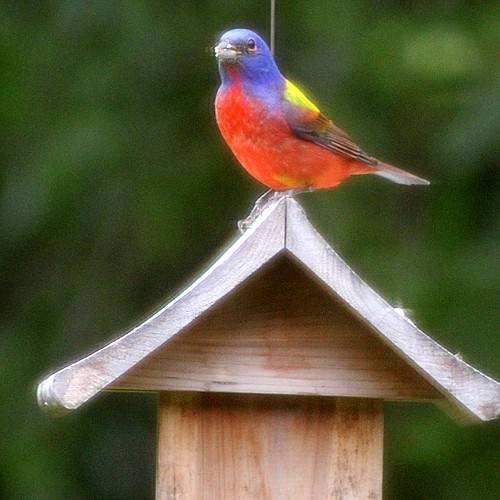- July 26, 2025
Your free article limit has been reached this month.
Subscribe now for unlimited digital access to our award-winning local news.

by: Corey Comstock
Flagler Humane Society
As a young man, I never gave the bird population much thought unless you’re referring to the British slang definition. As I grew older and curious about my surrounding world, wildlife seized center stage and the more I became aware of them, oddly, the more they became aware of me.
If you have been reading my stories, all true, by the way, then you already appreciate my little backyard sanctuary, complete with mammals, reptiles, and birds, oh, yes, plenty of birds. I find it fascinating how each species has its own personality traits and beyond that, each individual has his or her own unique way of interacting with the rest of the wild society.
The first time my wife, Cindy, and I spotted a painted bunting, she thought someone’s pet parakeet had escaped. A glorious splash of colors flooded our retinas with such a delicious intensity.
“Wow! What is that?”
I scrambled for our Field Guide to the Birds of North America and thumbed through the pages until I landed on the painted bunting. The coloring on this creature stands out as nothing less than phenomenal. Vibrant blue head, fluorescent green back, fiery red chest, and a rich purple tail all swathe the little bird in uncanny luminance!
Ranger Cicely T. Pontiflet, from the Timucuan Ecological and Historic Preserve, proudly reported that people travel from all over the world to witness this extraordinarily feathered creature. Cindy and I did not realize how lucky we were to have these visitors to our backyard from time to time.
They stay secretive, and their populations are declining due to cowbirds raiding their nests and people caging them for pets. They roam the Southeast in brushy areas and woodland edges, keeping low in dense cover and feeding on insects and seeds. To spot one is surely a treat but to have one come and honor your home, well, that will take your breath away.
When a few of them happened upon our home for the first time, they were ravenous and exhausted and squatted in the feeders, alternating between groggily eating and dozing-in-place. They must have endured quite the migration journey. After a few days they departed, only to return six months later for another stopover recharge.
Presently, it’s clockwork as they fly in for a few days, first on their way down to their winter retreats in South Florida and, then again, on their way back to their usual summertime flapping grounds, typically coastal regions in the Carolinas.
I do not know if it’s climate change conditions or because we pack high-quality bird feed, but the diversity of birds visiting our backyard preserve continues to expand. This year was a first for Baltimore orioles and I will be dog-gone if we didn’t have a red-breasted grosbeak poke in for a couple of days. I run for my camera but they are usually gone by the time I return.
Here’s the kicker, though. On our radio show, "Speaking of Animals," Ranger Cicely mentioned both the painted buntings and the indigo buntings as the world renown attractions to her national park. A few days later I glanced into our backyard and guess what I saw?
Why, indigo buntings, of course. A cute little family of four.
Your free article limit has been reached this month.
Subscribe now for unlimited digital access to our award-winning local news.